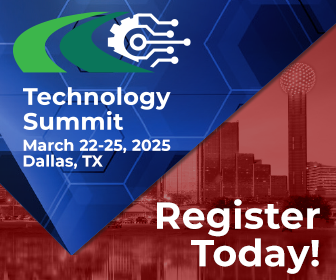- Home
- Post-COVID Infrastructure Plan Must Account For Maintenance Costs
Stories
Post-COVID Infrastructure Plan Must Account for Maintenance Costs


As policy analysts and decision-makers turn their attention to the mammoth task of “building back better” from the COVID-19 pandemic and getting America back to work, they keep pointing back to tolling and other forms of user financing as an essential piece of the puzzle—even if they don’t quite say so.
For the most part, the various experts weighing in on the coming wave of infrastructure investment aren’t singling out tolling as a part of the solution. But the things they’re looking for—the building blocks that will make the programs work—all lead toward an innovative, dynamic industry that is perfectly positioned to help make the recovery happen.
The latest is a post in Governing, a well-read online publication that digs deep into the future of financing for state and local governments, in which retired public finance professional Girard Miller explores the project planning, financing strategy, and revenue plans that will be needed to make post-COVID infrastructure investments work.
It All Comes Back to Funding
Miller opens with an argument to make the best use of the current pandemic lockdown period, to set the stage for a major infrastructure push in 2021. He calls for a modest, $10-billion Congressional allocation to cover half the cost of the project plans and design work that can be completed now, to line up what he foresees as a trillion-dollar project pipeline next year.
But that work will have to be paid for. Miller sees the dollars coming from user fees, not general taxpayer funds, and he cites surface transportation as a leading example.
“One clear example is highway and bridge renovation,” he writes. “The federal and state system of motor fuel taxation is incapable of fully funding that work. This will only get worse as fuel economy improves and the nation migrates toward electric vehicles. A nation-wide expansion of tolling is a big part of the solution.”
He bases that assessment on a clear understanding of what tolling can achieve. “The technology is already in widespread use for tolls to be captured electronically—no toll booths required—when a vehicle passes a monitor that captures data from its transponder or license plate. E-tolls won’t solve the entire problem, but they will go a long way to cover these huge costs. The rollout of 5G telecom technology will facilitate the transition.”
Infrastructure is Never Paid For
Miller also recognizes the essential reality that no road—and no other piece of infrastructure—is ever fully paid for. Much of his analysis focuses on how to keep next year’s infrastructure investments in operation after the ribbons are cut.
“One reason our infrastructure is so depleted is that governmental accounting and budgeting practices are focused entirely on paying off the debt incurred to build the project and fail to also set cash aside for its replacement,” he writes. His post lists several ways to correct that imbalance:
- Federal financial incentives for state and local projects that include full depreciation pricing, with funds set aside annually to cover “the inevitable replacement of the project’s facilities”;
- Better access to long-term credit;
- A wider pool of funding sources for infrastructure projects;
- Funding projects through revenues (he suggests federal tax increases), not deficits.
Tolled facilities check each of those boxes—by factoring in maintenance and refurbishment costs across the life of a project, entering into decades-long agreements with bondholders, enabling innovative financing models that aren’t available to traditional projects, and providing a steady revenue stream to make it all possible. Tolling agencies have also been quick to respond to the massive changes wrought by the pandemic, pivoting quickly to ensure the safety of their employees and customers while making plans to deliver projects and infrastructure in an uncertain future.
As the pandemic unfolds, we’re already seeing a secondary avalanche of ideas, analysis, and visions of what the future of transportation might look like. What they all have in common is that new infrastructure will have to paid for—not only when it’s built, but for as long as it’s in use. Girard Miller’s post is one measure of the complexity of the challenge. And tolling is an important part of the solution.

Joining IBTTA connects you to a global community of transportation professionals, offering unmatched opportunities for networking, knowledge-sharing, and collaborative innovation in the tolling and transportation sector.
Follow IBTTA on social media for real-time updates on transportation trends and collaborative opportunities.





